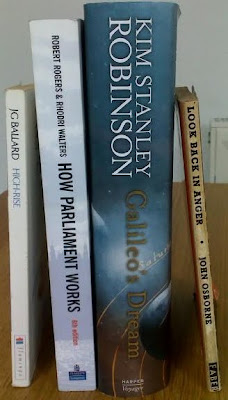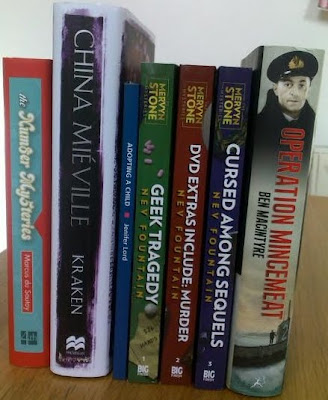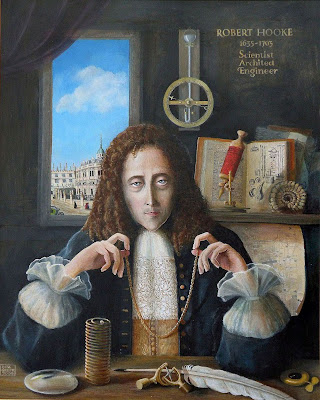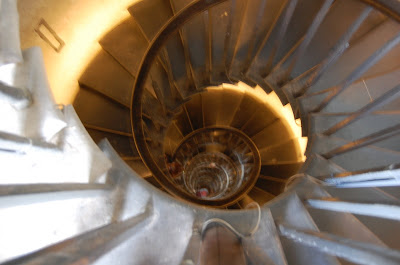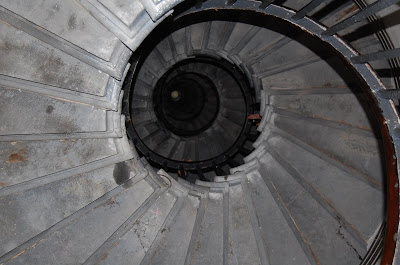I wrote this trail for the
Petrie Museum of Ancient Egyptology, which has just had a spangly new makeover. Cat and gothic trails are also available (not by me). Download the latest versions from the
Petrie's trails and resources page.
(Will add more images and links when I have a chance.)
“With infinite complacency men went to and fro over this globe about their little affairs, serene in their assurance of their empire over matter. It is possible that the infusoria under the microscope do the same.”
HG Wells (1898), The War of the Worlds, p. 1.
“The man who knows and dwells in history adds a new dimension to his existence; he no longer lives in the one plane of present ways and thoughts, he lives in the whole space of life, past and present, and dimly future. He sees the present narrow line of existence, momentarily fluctuating, as one stage like innumerable other stages that have each been the all-important present to the short-sighted people of their own day”.
WM Flinders Petrie (1904), Methods and Aims in Archaeology, p. 193.
“The point of archaeology is to carefully recover the past, not disintegrate it.”
The Doctor (1989), Doctor Who: Battlefield.
SPHINX1. UC14769 (IC13, 2nd from top): Part of base of a sandstone sphinx with 2 paws and cartouches each side denoting Seti I. As Petrie argued, understanding the past helps to place the worries and wants of the present day in context. Archaeology strives to understand the past from the meagre fragments left to us. From the exquisitely crafted jewels and sculptures to the shards of broken pottery, collecting and comparing these fragments slowly brings the long dead back to life.
We know the fragment here shows the paws of a sphinx from comparison with other artefacts and sources. A sphinx is a mythological creature, often (though not always) having the body of a lioness and the head of a woman. Sphinxes are usually found “guarding” royal tombs.
Science fiction can also place the worries and wants of the present day in context by imagining things to come. HG Wells wrote what many consider the first science-fiction novel
The Time Machine in 1895 when the British Empire reached across the world.
In the story, a Victorian inventor travels to the year 802,701 where he discovers that humans have died out. Instead, creatures called Eloi and Morlocks live in the shadow of an ancient monument, the only visible remaining trace of civilisation. Wells makes this ancient monument a sphinx, likening the fall of civilisation (and the British Empire) to the fall of ancient empires such as Egypt. The story – and these fragments of two paws – remind us that nothing lasts forever.
Several science-fiction stories show us future societies struggling to understand the fragments left of our own civilisation – often for comic effect. In the 2005
Doctor Who story
The End of the World, for example, the Lady Cassandra insists that an old Wurlitzer jukebox is an ‘iPod’.
But there's a sadder connection between the fragments of the past and science fiction. The Petrie Museum holds scant fragments of one of the earliest-known copies of
The Iliad.
Doctor Who visited the events of
The Iliad in the 1965 story
The Myth Makers, a story that has since been deleted from the BBC archive. Fragments are left: a full soundtrack (released on CD by BBC Audio), some photographs from the set and a few seconds of low-quality footage.
RAT TRAP2. UC16773 (Object by Site: Lahun, bottom): Pottery rat trap. Handle, one end and trap door missing - one enlarged air slit partly blocked with ancient plaster. (Originally identified as a coop for small chickens or incubator).Archaeology and science fiction can both show us how similar we are today to the people of the distant past and future, with the same worries and wants. Here is a pottery rat trap from 1985 -1795 BCE. It gives a vivid sense of the kind of everyday problems faced by people 4,000 years ago. Beside the rat trap is a modern version of the type still in use across Africa. The suggestion might be that little has changed in all that time, that people will always be people. This can also be used to dramatic effect.
In the 2008
Doctor Who story
The Fires of Pompeii, Caecillius is pretentious about art, worries about his son getting drunk and how his daughter is dressed. Though this is jokey to begin with, when the volcano Vesuvius erupts, the story is all the more effecting because we've seen these people are so like us.
In
The Fires of Pompeii, the Doctor mentions meeting the Emperor Nero – as he does in the 1964 story
The Romans. 3. Nero is named in the cartouche on the blocks
UC14528 and
16516 (case IC16).
MINOTAUR and MEDUSA4. UC14518 (case IC9): Limestone slab with bull-headed god, between parts of 2 other figures.We tend to think of ancient civilisations existing in isolation – the ancient Greeks and Romans separate from the ancient Egyptians. But it's evident from finds made by archaeologists that ancient cultures traded with one another, and that ideas and stories spread. Myths were retold and reworked by different people, as they have been ever since.
Gene Wolfe's
Soldier of Sidion (2006) is set in Ptolemaic Egypt, the third in a series about a Roman mercenary making his way through the ancient world but one where the ancient gods walk among the ordinary mortals. A rich, clever adventure, it dares suggest itself less “fantasy” as historical novel.
In the examples on display in the museum here, we can see that the ancient Egyptians themselves told stories featuring characters we traditionally think of as “belonging” to other cultures – such as bull-headed people (like the Minotaur from Greek mythology) and gorgons (like Medusa).
Many science fiction stories rework myths or elements of them. They might reveal that the gods and monsters of the ancient world were aliens or robots. They retell the ancient stories in space instead of Egypt or cherry-pick incidents or characters.
5. UC48468 (case PC 35): Terracotta medallion of a gorgon head; there are traces of white paint on the surface. The facial features are sharply moulded and the hair wavy with two entwined snakes at the top. Medusa appears in the
Doctor Who story
The Mind Robber (1968), the Minotaur in
The Time Monster (1972). The latter was released on DVD in March 2010 as part of the “Myths and Legends” box-set (BBC DVD 2851), along with two other
Doctor Who stories that rework ancient stories.
SOUNDS FAMILIARSometimes science fiction doesn't rework the myths so much as just borrow the names. For example, the Doctor and the Daleks briefly visit the pyramids in episodes 9 and 10 of
The Daleks' Masterplan (1966).
(Episode 9 no longer exists in the BBC archive but episode 10 is included in the "Lost in Time" box-set, along with the few existing seconds of footage from
The Myth Makers).
The three Egyptians who help fight the Daleks are named “Khephren”, “Tuthmos” and “Hyksos”.
Khephren takes his name from Chephren / Khafre (c.2558 - c.2532 BCE), the pharaoh who built the second great pyramid at Giza and whose face was the model for the sphinx that guards it. You can see a cuboid fragment from the second pyramid at
6. UC16043 (entrance case on right).
Tuthmos is derived from “Tuthmosis”, the name of several pharaohs in the 16th and 15th centuries BCE. Most notably, Tuthmosis III (1479 – 1425 BCE) was a military genius who massively expanded the Egyptian empire. A cartouche of his name can be seen at
7. UC14542 (case IC5).
The tomb of Tuthmosis III was excavated in 1898 by Petrie's contemporary, Victor Loret (1859-1946). The tomb (KV34) in the Valley of Kings included the first complete-found “Amduat” - the book of the Underworld. It is also, as Sarah Jane Smith tells the Doctor in the 1975 story
The Pyramids of Mars, where an account is given of Sutekh's battle with his brother Horus.
Hyksos is named after the people from Palestine who ruled in Egypt in the 17th century BCE. Examples of pottery from their time and influenced by them include the black duck jug at
8. UC13479 (case PC27), with white incisions on display in the Pottery Gallery.
SEQUENCE DATINGThe film and TV series
Stargate (1994, 1997- ) explain that the myths and names of ancient Egypt derive from meetings (via gateways across space) with aliens. The hero of the film is an archaeologist and sarcophagi are used to resurrect people. In the film, the planet on the far side of the stargate is called Abydos, which is the name of the place where the tomb of Osiris is located and where this limestone stele
9. UC14488 (case IC2) was found.
The film shows us the “real” Egyptian gods Anubis and Ra. The TV series has also shown Apophis, Anubis, Ba'al, Hathor, Nirrti, Osiris and Seth – among others. It has also freely used names and events from other mythologies.
(By comparing the names and events of other mythologies rather than Egypt specifically,
Stargate follows in a tradition of science fiction stories taking their cue from Joseph Campbell's 1949 book on comparative anthropology,
The Hero With a Thousand Faces.)
The stargates and other technology in the series are made of an element called “naqahdah”. The name is reminiscent of Naqada, a town on the west bank of the Nile that Petrie excavated in 1894.
Whereas some archaeologists before him had been more interested in finding treasure and texts, Petrie carefully recorded everything he found, including the broken pieces of pottery on display in the Pottery Room. (
Start at PC3 and also see www.digitalegypt.ucl.ac.uk/pottery/seqdates.html)
By comparing the styles of pottery itself and its decoration, Petrie developed a Sequence Dating system – a timeline of nine developments in Egyptian pottery. This could then be used to give approximate dates to any further finds made which contained fragments of pottery.
According to Petrie's system – and subsequent testing – the town of Naqada is one of the oldest in Egypt, with pottery found from 4000 BCE in the pre-dynastic period. As a result, the name of the town often appears near the top of any timeline. That may well be why the producers of
Stargate chose it.
Like
Stargate, a 2009 episode of the TV series
Primeval suggested that the “gods” from ancient Egypt were real creatures. One of them chased through the Egyptian galleries at the British Museum.
SCARAB BEETLES10. UC69860 winged scarab beetle (case L)The way that scarab beetles rolled great balls of dung seemed, to the ancient Egyptians, like the way the Sun rolled across the sky. Perhaps the Sun, too, was pushed by a giant beetle. The beetle was therefore symbolic of time.
The beetles also ate the balls of dung and their young emerged from them – as if, the ancient Egyptians thought, they had been spontaneously created. The beetles were therefore also symbolic of regeneration.
Time and regeneration are, of course, quite important to
Doctor Who. But beetles usually play a more sinister role in modern stories that loot the relics of ancient Egypt. In the 1999 film
The Mummy, the tomb of Imhotep is guarded by flesh-eating scarabs.

The 1967
Doctor Who story
The Tomb of the Cybermen reworks many familiar elements from Mummy stories in a science-fiction context. In the 1959 Hammer film
The Mummy, actor George Pastell plays Mehemet Bey, worshipper of Karnak, who pretends to be a friend of the archaeologists then entreats the risen Mummy to kill them. In the Doctor Who story Pastell plays much the same part, but here he's a member of the Brotherhood of Logicians. Instead of scarabs, we are introduced to Cybermats, which poison and kill the archaeologists as the story requires.
ANKH11. UC43949 (case WEC9) Light green faience ankh inscribed on both sides of shaft with epithets and cartouches of Aspelta.Egyptian gods are often shown carrying the ankh, also known as the “key of life”, the hieroglyphic symbol for eternal life. There are several different theories about what the ankh derives from. Is it meant to show a man and woman united under the Sun, or does it show the Nile at the centre of Egypt, the loop at the top representing the Nile Delta, or a penis sheath?
In Neil Gaiman's award-winning
Sandman comics, the ankh is the symbol of the character Death. In the TV series
Lost, several characters are seen wearing ankh pendants, while the giant statue of the hippo-god Taweret holds an ankh in each hand. (Lost is littered with Egyptian symbols and hieroglyphs, see
http://lostpedia.wikia.com/wiki/Hieroglyphs.)
NEMES HEADRESS12. UC14363 (case IC17) Head of mottled diroite (about 1/2 size) of King Amenemhat III, wearing Nemes head-dress and uraeus.The distinctive striped “nemes” head cloth was worn by Egyptian pharaohs. The flaps of the head cloth taper out behind the wearer's ears and hang down below both shoulders. The golden mask of Tutankhamun and the great statues of Ramesses II are famous examples of pharaohs wearing the nemes. It was often worn with a “uraeus” or “cobra” on the forehead, symbol of royalty.
The space helmets worn by Viper pilots in the original
Battlestar Galactica TV series (1978-9) were based on the nemes head cloth, subtly suggesting the links between the human refugees seen in the series and the “legendary” planet Earth they were searching for. The helmets featured a viper symbol instead of the uraeus.
The modern version of
Battlestar Galactica (2004- ) has not retained the nemes-style helmets, but there are still occasional hints of the links between the refugees and Earth's ancient civilisations. For example, pyramids can be glimpsed on the colony planet Kobol.
Both the original and modern versions of
Battlestar Galactica are available to buy on DVD.
MAGIC13. UC36314 (case J): Hippopotamus ivory clapper, reconstructed from fragments, in form of right hand; incised bracelet band at wrist and ornate net pattern on arm.There are many theories about the wands found, usually made of hippopotamus ivory. Hippopotamuses and elephants are dangerous creatures, so acquiring the ivory from a living animal may have been part of the ritual. The wands do not use all of the tusk, either, so each tusk may have produced a “family” of linked wands (not dissimilar to the families of wands in
Harry Potter). Wands were clearly of great value. Some use ebony and other precious materials.
Little is known of Egyptian magic, which makes it ripe for speculation in horror and science fiction stories.
The Book of the Dead is central to many stories dealing with mummies and resurrection. But Egyptian magic is also used to time travel in both Tim Powers' award-winning
The Anubis Gates (1983) and Terry Pratchett's less serious
Pyramids (1989).
SUTEKH14. UC45093 (case IC7): Upper part of a green glazed steatite round-topped plaque incised with image of Seth standing, to his right a column of hieroglyphs 'excellent praised one, beloved of Seth lord of Nubt'. In the 1975
Doctor Who story
The Pyramids of Mars, the Doctor and Sarah Jane Smith battle the Egyptian god Sutekh – also known as Set or Seth. The inscription says that Seth was “Lord of Nubt”, the ancient name for Naqara (see above).
Though Seth was Lord of Nubt, the opening shot of
The Pyramids of Mars uses stock footage of the step pyramid at Saqqara. A block, possibly an altar or the top of a pyramid looks like the Step Pyramid in Stonework:
Statuary IC15 15. UC69838.
Sarah knows about Sutekh's battles with his brother Horus: she explains Sutekh was captured by Horus and “the 740 gods named on the tomb of Tuthmosis III”.
The story includes robot mummies, sarcophagi that transport people, a forcefield controlled by canopic jars, and sphinx-like riddles to get into the pyramid on Mars. It draws heavily on the 1959 Hammer film
The Mummy, as did
The Tomb of the Cybermen (see above).
While Egyptian mythology (and
Doctor Who) is full of creatures that are human but for animal heads, unusually, the animal that provides Seth with his head is unknown to science.
HEROES16. Portrait of Flinders Petrie by Fülöp László (1934). The old man in the picture might not seem a likely inspiration for Indiana Jones. Yet the traveller-archaeologists of the late 19th and early 20th centuries told exciting tales of the worlds they'd discovered – and the adventures they had in discovering them.
Indiana Jones, Rick O'Connell in
The Mummy, Daniel Jackson in
Stargate and the Doctor's future wife, River Song in
Doctor Who have followed that lead. The archaeologist battles the odds to uncover strange and surprising artefacts that change how we see our own place and time.
Like detectives, they use the clues left behind
(17. UC50615 Roman Terracotta Tower lamp, like the ‘TARDIS’ lamp on the altar to the household gods in The Fires of Pompeii), the battered artefacts and writings. They don't use them just to solve crimes but to build whole cities and empires and worlds. Exploring the real, ancient world turns out to be just as rich, strange and exciting as anything we can imagine in a story.
© Simon Guerrier, 2010
Primary sourcesBattlestar Gallactica (1978-9, 2004-)
Doctor Who- The Romans (1964) – BBC DVD 2698
- The Myth Makers (1965) – soundtrack available from BBC Audio
- The Daleks' Masterplan (1965-66) – episode 10 available on Lost in Time, BBC DVD 1353
- The Tomb of the Cybermen (1967) – BBC DVD 1032
- The Mind Robber (1968) – BBC DVD 1358
- The Time Monster (1972), included in Myths and Legends, BBC DVD 2851
- The Pyramids of Mars (1975) – BBC DVD 1350
- Battlefield (1989) – BBC DVD 2440
- The End of the World (2005) – BBC DVD 1755
- The Fires of Pompeii (2008) – BBC DVD 2605
Gaiman, Neil,
The Sandman (1989-96)
Lost (2004-10)
The Mummy (1959)
The Mummy (1999)
Rowling, JK,
Harry Potter and the Philosopher's Stone (1997)
Powers, Tim,
The Anubis Gates (1983)
Pratchett, Terry,
Pyramids (1989)
Primeval (2007-)
Stargate (1994, 1997-)
Wells, HG,
The Time Machine (1895)
Wells, HG,
The War of the Worlds (1898)
Wolfe, Gene,
Soldier of Sidion (2006)
Secondary sourcesBurdge, Anthony, Burke, Jessica, and Larsen, Kristine (eds.),
The Mythological Dimensions of Doctor Who (2010)
Campbell, Joseph,
The Hero With a Thousand Faces (1949)
Dowden, Ken,
The Uses of Greek Mythology (1992)
Petrie, WM Flinders,
Methods and Aims in Archaeology, (1904)
Thanks to Scott Andrews, Debbie Challis, John J Johnston and Stephen Quirke.
 Graceless, the three CD sci-fi mini-series what I wrote, is out this month. The Big Finish website boasts full details and a trailer, and the new issue of free online Vortex magazine interviews stars Ciara Janson and Laura Doddington.
Graceless, the three CD sci-fi mini-series what I wrote, is out this month. The Big Finish website boasts full details and a trailer, and the new issue of free online Vortex magazine interviews stars Ciara Janson and Laura Doddington.